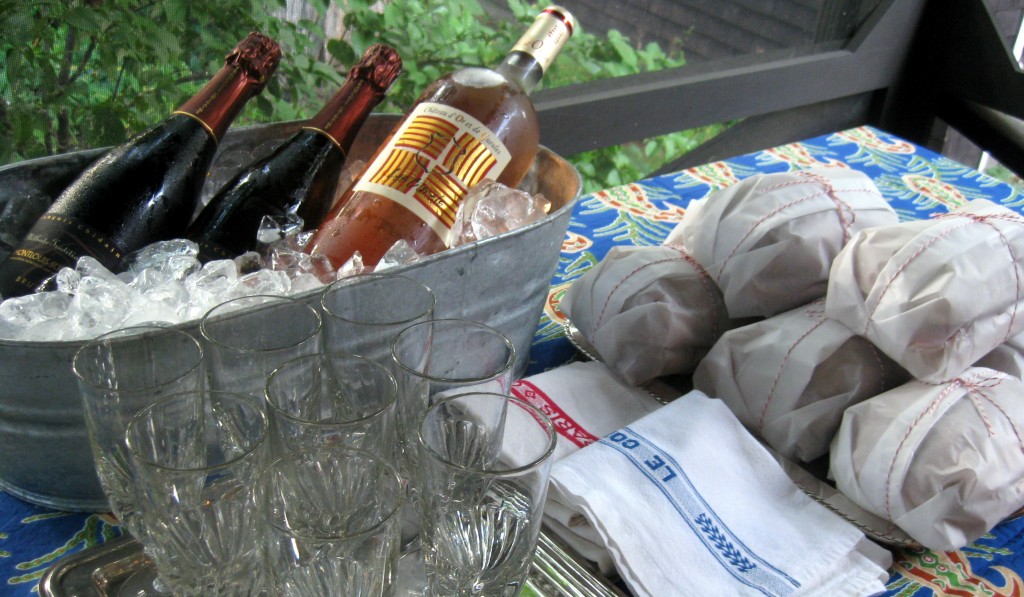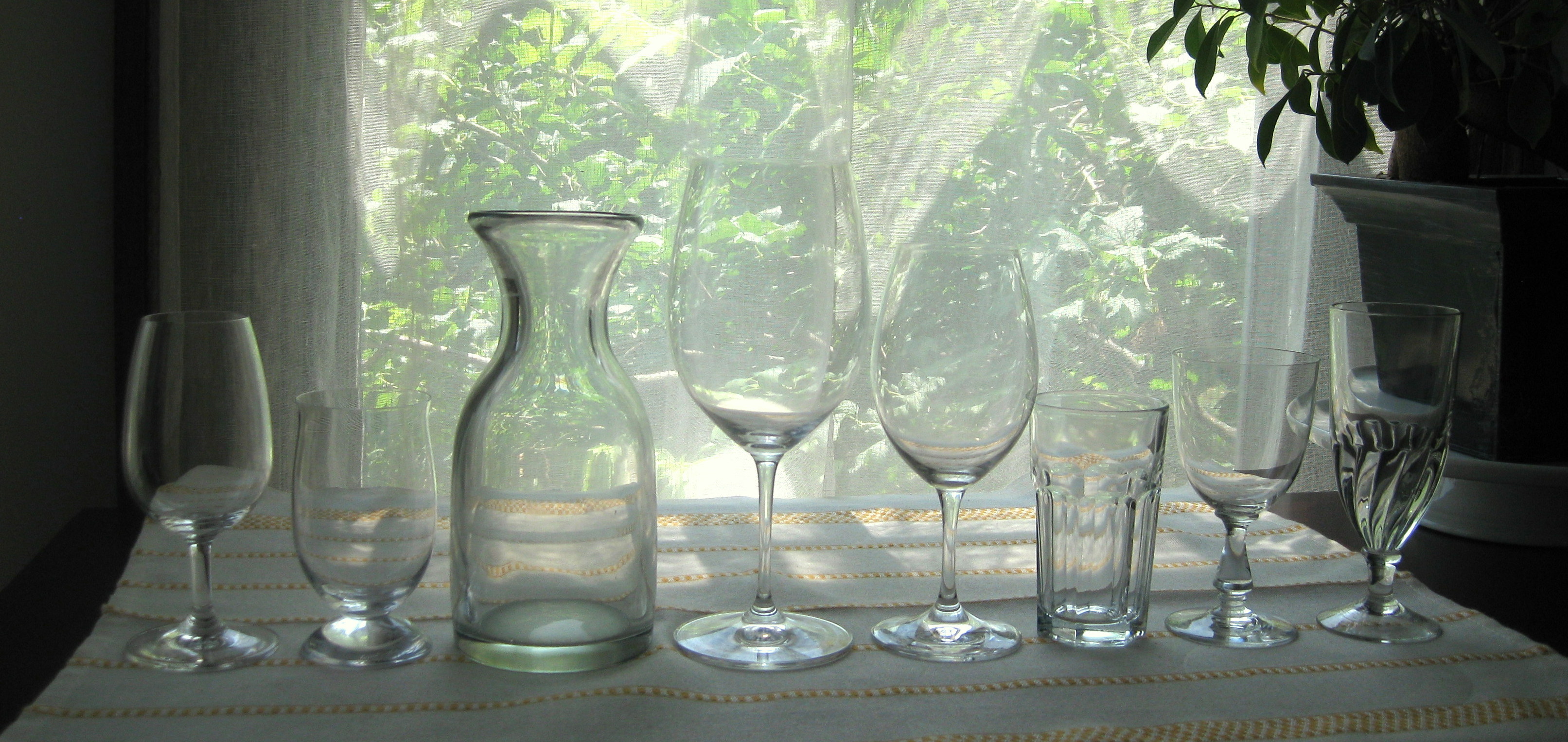
Historians of material culture know as new foods, dishes, and ingredients enter a social space they’re often accompanied by new equipment necessary – or at least helpful – to both preparing and serving them graciously.
Sugar, coffee, chocolate, and tea all found their way to European and American homes beginning in 18th century, and provided fresh opportunities for people of means to adorn their homes with all sorts of fashionable new accoutrements; among them chocolate whips and frothers, sugar bowls, tea services, and coffee pots and cups.
It’s clearly one of the ways new foods and drinks make their way in the world. Elites get to spend money on beautifully-crafted manufactures, learn how to use them, put them on display. “We can afford such things,” seems to be the subtext. “Oh, and we’re chic, too.”
In something like the same way a household that develops an interest in wine where one has not existed before will experience both a need and a desire to collect the things thought necessary to indulge their enthusiasm. Among the first to get attention is likely to be glass stemware.
It was abroad, in shabby but comfy cafés that I learned that common folk typically took their wine in tumblers – and decided that, since I was common folk myself, I should henceforth do the same.
When my interest in wine was stirred in the late 1970’s, it wasn’t as easy to find tasteful, cheap stemware as it is now, but I did my best to pick up the odd item here and there. A bit of European travel added another dimension to the rather motley collection.
It was abroad, in shabby but comfy cafés that I learned that common folk typically took their wine in tumblers – and decided that, since I was common folk myself, I should henceforth do the same. Over the years my wife and I have collected some nicer glassware, only some of it on purpose. Most of it by accident or as gifts. Not all of it is of the stemmed variety and not all of what anyone would call elegant. Forty years later, we’re still collecting.
So, it was with particular delight that I read Decanter columnist Andrew Jefford’s recent essay describing his own diverse and – by his own admission – somewhat shabby collection of wine-drinking vessels, which includes (rather amazingly) jam jars and mustard pots. It made me think it was time to take a look at my own collection of paraphernalia and think about how I use them. You see the little glass menagerie below (click on the photo to see it in higher resolution). I’ll describe each moving left to right.
 (1) One of the last ISO (or INAO) tasting glasses I still own. The short, stemmed, tulip-shaped glasses are the ones recommended by the standards organization whose names are appended to them and are frequently used in formal tasting events. These used to be widely available from a glassworks in New York state that made them to a very high standard. That company is now out of business and when I want to order more I have to be satisfied with a clunkier, cheesier version. These get the heaviest use of any glasses I own. Price: Around $25 for a set of six.
(1) One of the last ISO (or INAO) tasting glasses I still own. The short, stemmed, tulip-shaped glasses are the ones recommended by the standards organization whose names are appended to them and are frequently used in formal tasting events. These used to be widely available from a glassworks in New York state that made them to a very high standard. That company is now out of business and when I want to order more I have to be satisfied with a clunkier, cheesier version. These get the heaviest use of any glasses I own. Price: Around $25 for a set of six.
(2) The squat, footed glass is one Samuel Adams Brewery designed for its premium Utopias brew. Yes, a beer glass. One bounced around the Boston Globe for a while before eventually making its way to me. My wife liked it so much we bought two more from Sam, then received a pair as gifts from a friend. These are the glasses we fill every Friday night. Why Friday? It’s ordinarily the only night of the week my weight-conscious wife drinks wine. Price: Around $28 each.
(3) A decanter – the only one we own and far from classic in form or volume. But we bought it in a funky shop on a backstreet in Avignon almost 20 years ago years ago and have always loved it despite its stubby figure and a lip that dribbles hopelessly. Price: We thought it was a lot at the time.
(4) To its right is one of a grand set of glasses given by good friends when we were married in 2004. They’re Riedel Sommelier series Bordeaux and ginormous (taller than the decanter, as you can see). In truth, these have always felt a wee bit pretentious, so we don’t take them out very often. Other issues are their height (9″) and super-model legginess, two factors that make me nervous around them. But when the dinner and the guests require that corks be pulled on something Big and Red, they make a regal impression. Price: I don’t like to think.
(5) Adjacent is an example of the Riedel Overture series that is my favorite all-purpose, formal stem. Good sized, but not show-off big, they do yeoman’s work and are most often just the thing when there’s enough of a wine on offer to make the glass matter. One doesn’t fret about their center of gravity – there’s little chance a stray elbow or cuff will send one into the hostesses’ lap — and although they come in both red and a more narrow bowled white version, the shape and volume is such that either does fine for red, white, pink, or orange. I have a bunch of these (15?) and put them to use anytime the dining room table is set. Price: Around $8 each.
(6) The short tumbler is a diminutive version of the Gibraltar (or rocks glass) beloved of restaurant and hotel bars all over the world. At 4 1/2″ inches it doesn’t hold much, but has a nice weight in the hand and has the aura of those tumblers we first learned to love in the scruffy, now defunct Cafe des Beaux Arts on the Rue Napoleon in Paris. Last week, when we had 16 for a sit-down supper on our back porch (a reunion of Boston Globe Insiders we escorted to Sicily in May) this was the glass we used for all five wines we poured, simply because we have more of these than anything else — probably three dozen — and they’re virtually unbreakable. We used more of the same for the parfait-like dessert. Price: Around $2 each.
(7) The experts will tell you that proper wine glasses need bowls that are broad near the bottom and taper toward the top. The idea is to give the aromatics a place to gather so you can the better breathe them in. The last glass but one in this group defies such logic. It’s one of a set of six French-made Baccarat glasses given to us by food historian and former curator of the culinary collection at the Schlesinger Library, Barbara Wheaton. The shape of these gem-quality antiques seem to owe everything to an elegant, understated style and much less to function. We use them rarely but always appreciatively, and only for the few bottles of older Burgundy we’ve managed to collect over the years. They seem perfect for that. Price: Impossible to say.
(8) We love a sparkler – infrequently Champagne; most often some little regional bubbly — and never start even the most informal dinner party without one. You have a few proper flutes, but never use them, preferring these footed but stemless glasses with the swirl pattern you see at the end of the line. They’re actually absinthe glasses, rather heavy but, we think, with real charm. My wife bought the original two at Pierre Deux in the early 80’s, then one or two more as she could afford it. We bought another group together in a shop in the Hudson River Valley a few years ago. Price: Around $25 ea.
I wouldn’t be prepared to say just how much of our enjoyment of wine comes from what’s in the glass and how much from the glass itself – except that for us, it’s considerable.